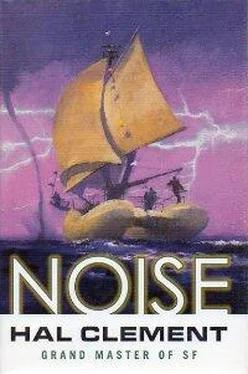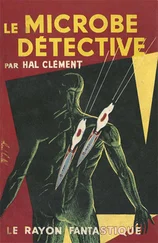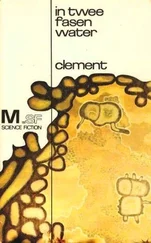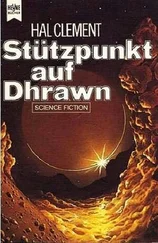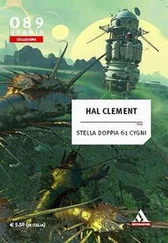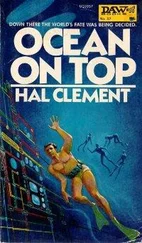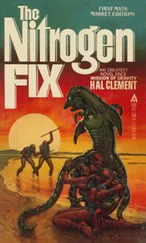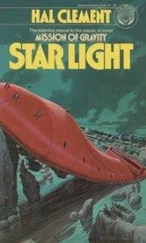Moving a little aft so that her safety cord would miss the captain, the child crossed the deck and reentered the sea. Mike adjusted the slack once more.
“Can you tell what Keo’s found?” he asked. “I know you can’t see or hear him, but is there some sort of code you can send by the ropes?”
Wanaka shook her head negatively. “He’s spotted something worth reporting, but wants the little one to see it too so they can tell us better what’s going on, I assume. Otherwise he’d simply have come up. If it makes you feel better informed, the longer they stay down will probably mean the worse it is.”
Hoani wondered whether this remark said more about the captain’s experience or just her personality. She had not, so far, seemed noticeably pessimistic or even cynical, so maybe it was experience. Before he himself could really start worrying, however, both ropes slackened and two heads broke the surface. Mike, without thinking, stepped toward the side of the deck to help his charge aboard and lost his footing as Malolo jerked to an unusually sharp tsunami. By the time he was back on his feet, both the others were aboard.
Keo’s helmet was off instantly. “If it’s a tracer, it’s a kind I’ve never seen,” he reported. “It’s fish-shaped, and has a hard shell, about twenty centimeters long. It doesn’t seem to have penetrated, but is very firmly fastened against us.”
“And we can’t really be sure about penetration,” added the child. “We can’t see under it. It has a jelly coating a centimeter thick all over it and reaching out over our hull for five or six centimeters all around. Someone better check the inside for things that shouldn’t be there.”
“You do it. You know where to look,” replied the captain. “If you have to shift any cargo, get Keo or Mike to help. Keo, help me set sail until ’Ao calls you.”
“But the suns are almost down!” exclaimed the child.
“We get away from here first, and worry about missing more cargo and bumping into things much later,” was the answer. “Don’t bother to say it—no, we don’t really know it’s a tracer, but we can’t do anything useful about it after dark, and I want to be far from here and have time to be careful when we can see again by something better than lightning or hand lamps. Carry on.”
The child disappeared belowdeck, and the others made sail. For once, Mike could help; he had done some sailing on Earth, and had kept his eyes open so far on this trip. In minutes, Malolo was under way, as usual in the direction that let them get the most possible speed out of the existing wind. Hoani had heard about the bits of stuff—“coral”; he could only guess what local item or phenomenon had taken over that word, though he knew what materials were grown to build the floating cities—occasionally found loose on Kainui’s oceans, but didn’t know how visible such objects might be even by daylight. He decided to let the captain’s apparent lack of worry be his guide, until it occurred to him that this might merely be a minor worry.
Keokolo stayed at the helm, while the others entered the cabin—the air lock allowed the child and the captain to go through together, but Mike’s bulk kept anyone from sharing it with him—and removed their breathing masks. Mike settled down to recording his mental notes of the last few hours, while Wanaka updated the ship’s log. ’Ao for some reason didn’t seem relaxed. She said nothing to her doll and watched the others, particularly the captain, closely. Eventually both adults noticed this.
Even Mike could see that the youngster wanted to say something, but he couldn’t guess what it might be. Not until Wanaka looked up from her writing and caught ’Ao’s eye did the problem become clear. The man suspected afterward that the captain had known all along what was on the youngster’s mind.
It was Wanaka who spoke first.
“Keo says you did a very good job on that split, ’Ao.”
The child’s expression brightened, but her words were less happy than they might have been. “Why didn’t he tell me?”
“Didn’t you know anyway?” Both the listeners caught the verbal trap, and ’Ao avoided it neatly.
“I was pretty sure, but there might have been something no one ever told me about that I missed. I was afraid he was going to tell me what was wrong when he comes off watch.”
“He may, of course.” ’Ao’s face fell. “He didn’t tell me anything bad, though. As far as I’m concerned you have another spark in your fire.” The girl still seemed uneasy.
“Then—will you—can you—”
“Sure. Let’s have it. Permission to doff armor. Do the air checks while I’m scribing.”
The upper half of the suit of noise protection, complete with helmet, was peeled off and handed to the captain at once. Mike looked away; in spite of many weeks on the planet, he was still a little uncomfortable at the Kainuian body shape. ’Ao had a reasonable height for her age, by his standards, but massed barely twenty kilograms and on this world weighed fewer than seven. To Mike, she looked unhealthily thin, as did the others. Clad in the bulky noise armor Kainuians looked all right, but in the single leotardlike garment worn in places where one could breathe without masks they were almost grotesque to human visitors. Their uniformly dark hair and eyes, contrasting often with extremely pale skins that were becoming increasingly widespread as generations went by under a pair of red dwarf suns, gave many visiting Terrestrials the impression of a group of walking skeletons.
’Ao went to check the indoor part of the oxygen equipment, which photosynthesized the Kainuian air along several chemical paths to produce sodium peroxide, controlled the reaction rate of the latter with water, and pumped enough of the remaining nitrogen into the cabin to keep any leakage moving outward. This equipment, like the “leaf” itself, was pseudolife powered by battery molecules charged in the “leaf.” Mike was not in the least surprised to see the child finish by slicing small pieces from each machine to make sure its healing capacity was normal.
Wanaka took the proffered upper garment and opened a small instrument kit taken from a compartment in her work desk. ’Ao crowded close after finishing her check; Mike couldn’t decide whether this was to watch better or because of the rule about never getting far from one’s armor when at sea. The captain took several styluslike objects from the kit and turned the garment so that she could see the back.
Mike had noticed the twenty-centimeter-diameter pattern on the child’s suit between the shoulders, but had not paid it much attention; the other two had similar markings, and he had assumed them to be crew insignia with meanings he might learn later, since his own suit was plain. The pattern details were extremely complex, and reminded him slightly, but only slightly, of Mandelbrot figures.
Wanaka, using one stylus after another for some ten minutes, modified ’Ao’s pattern carefully. Mike could see each change as it was made, but would never have been able to spot any difference between original and final designs if he hadn’t been watching the process. Also, he almost missed the fact that each tiny modification kept on changing for a while after the artist had gone on to another section. Once again nanotechnology—pseudobiology—must be at work.
Eventually, the captain put her tools back and handed the armor back to the child. ’Ao looked at it gloatingly for a few seconds, then caught the other’s eye and hastily slipped back into the garment. The captain nodded toward the hammock—there were also two shelflike bunks, and Mike suspected the arrangements had been modified to allow for his presence—and ’Ao, with apparent reluctance, started to climb into it. Then she paused.
Читать дальше
